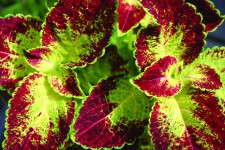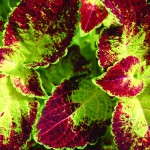Scouting Is More Than Looking For Insects

Catching problems before they become problems in a greenhouse requires a trained eye and a regular routine of monitoring plant health. While scouting is most often thought of as checking for insect pests, in broader terms it means monitoring overall plant health – checking for nutrient deficiency symptoms, under or overwatering, hot spots or cold spots in the greenhouse, sanitation problems and detection of disease pathogens. Scouting is at the core of any IPM program and is an essential best management practice for greenhouse operations. While record keeping and data collection may not be on your list of favorite things to do, the headaches saved down the road by catching problems early make it well worth your time.
“It’s not just scouting for insects and diseases,” says Kelly Ivors, associate professor and extension specialist at the Department of Plant Pathology at North Carolina State University. “It’s also scouting for healthy plants. It’s checking for healthy growing conditions such as monitoring temperature.”
Ivors stresses the importance of knowing what your plants are supposed to look like.
“For instance, there’s a lot of different varieties of coleus, and sometimes it’s easy to mistake [their variegation] for a disease or nutrition problem. But that might be the way they’re supposed to look,” she says. “You really need to know what that plant is supposed to look like when you’re working with floriculture and herbaceous plants because there’s so much variety.”
Overall plant health is important because a healthy plant can ward off some of the secondary, or opportunistic pathogens, on its own. These are things that aren’t typically problems unless you have other problems, Ivors says.
“For example, there are a few species of pythium that aren’t always a problem, but they can be if fertility is off, if there’s salt damage or if there are some odd temperature fluctuations,” she says. “You can [also] get botrytis really badly in a greenhouse if you have wounded plant tissue from cold temperatures.”
While scouting for insects may often involve measuring levels of the population and keeping it below acceptable thresholds, once a potential disease problem is identified, action is often taken early because diseases can spread so quickly.
“Look for wilting, for stunting, for yellowing leaves,” Ivors says. “Anything that looks abnormal.” Leaves that are off-color or have spotting are also signs of a problem, she says.
Once you notice something odd, it’s important to get the correct diagnosis, which often involves sending samples to a plant pest and disease clinic.
“Half the things we get in our clinic aren’t even diseases or insects – they’re cultural things. But growers are willing to send samples in to get that confirmed because they know it could be a big problem if it is a disease,” Ivors says.
The location and spread of symptoms often offer a clue to the type of problem.
“You have to look at the consistency of the problem across the entire crop,” Ivors says. “If it’s affecting the whole crop, it’s probably a cultural problem. Often diseases don’t show up with that kind of uniformity unless perhaps you propagated from infected material.”
Ivors points out that this is where good record keeping becomes important, stating that for diseases, comparing the time of day, the symptoms and location of the problem can then be compared with pest control and fertilizer applications, as well as with temperature and humidity records to see if there might be a connection, such as a phytotoxicity issue with a plant growth regulator or fungicide.
Diligent, regular scouting by someone trained in what to look for buys time and allows more options for control, Ivor says, because you can prevent the problem rather than trying to apply something curative.
“A lot of fungicides do not have curative activity. If you don’t scout and don’t catch the problem until it’s at a very high level, it’s very difficult to control at that point,” she says.
Ivors cites powdery mildew as a good example of this.
“There are a lot of products that are very good at protecting plants that aren’t yet infected,” she says. “But it’s very difficult to wipe out the disease once it’s been established.”










